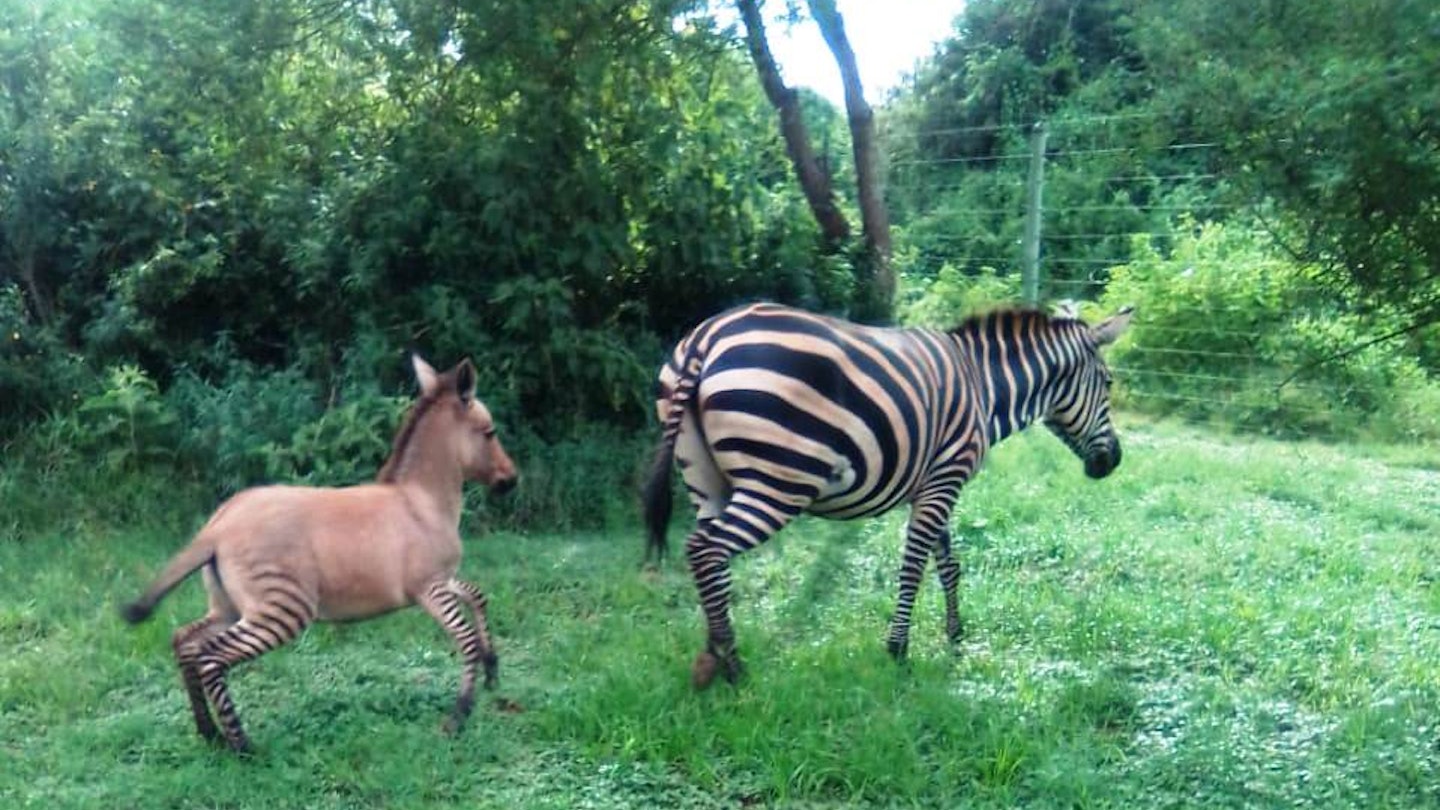'A sight that makes us marvel at nature' - rare zonkey born in Kenyan national park

Apr 15, 2020 • 2 min read

Rangers at a wildlife park in Kenya are overjoyed after discovering that a zebra in the park has given birth to a zonkey.

A zebra at Chyulu Hills National Park in Kenya was spotted by rangers tending to an unusual looking foal earlier this year. The foal had the characteristic stripes of a zebra on its legs but its head and body were the solid tawny colour of a donkey. Upon closer inspection, conservationists from the Sheldrick Wildlife Trust, a nonprofit dedicated to animal rescue and rehabilitation, discovered that the foal wasn't a zebra but a zonkey, a rare zebra-donkey hybrid.
Before moving to Chyulu, the mother zebra had ventured out of the Tsavo East National Park and become an "honorary member of a local woman's cattle herd," a spokesperson from Sheldrick explained. It appears that while living here, the zebra came across an "amorous donkey" and mated with him. When it became apparent the zebra was pregnant, Sheldrick conservationists moved her to Kenze Anti-Poaching Team’s base in Chyulu National Park so they could keep a closer eye on her, not expecting that she would give birth to a zonkey.

"Working with wildlife, one learns to expect the unexpected," the rescue group said. "Even the most seemingly straightforward story can eventually reveal its true stripes and end up surprising us all. At first, we thought that [the foal] had just been wallowing in the mud bath, but then the truth dawned on us: Our wayward zebra had given birth to a zonkey!"
Cross-breeding between zebras and other members of the equine family is rare but it's not unheard of, although it is more unusual that the zebra is the mother. They're sometimes referred to as zebroids and are rarely seen in the wild. These striking creatures have the sturdy body of the donkey and the striped legs of a zebra, according to experts at Sheldrick, and, as they are mules, they cannot produce offspring of their own.

Mother and baby are said to be "thriving" in an area of the park with few predators and plentiful water and grass. It is hoped that they will eventually be accepted into a zeal, or group, of wild zebras when the time is right.
"Until that day comes, they seem quite content to spend their days grazing side-by-side," said the team at Sheldrick, "a sight that makes us all stop and marvel at the wonders of nature."




